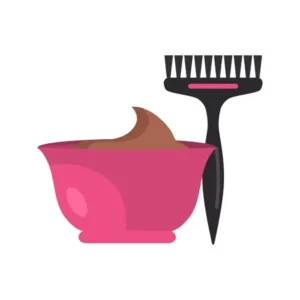Project Report For Hair Dye
Introduction
Project report for Hair Dye is as follows.
The act of altering hair colour is known as “hair colouring” or “hair dyeing.” The major motivations behind this are purely cosmetic, to hide grey or white hair, switch to a hue that is thought to be more desired or fashionable, and get back to one’s natural hair colour after having it bleached or discoloured by sun exposure or hairstyling procedures. A hairdresser can professionally colour hair, or it can be done on one’s own at home. Over 55% of women tint their hair today, demonstrating how popular hair colouring has become. The global market for at-home colouring exceeded $30 billion in 2011 and is predicted to reach $32 billion by 2016. Indian herbal hair dye has a promising future in the industry.

Product And Application
The ancient practise of dying hair entails subjecting the hair to numerous chemical treatments. The dyes were made from plants in the past. Henna (Lawsonia inermis), indigo, Cassia obovata, senna, turmeric, and amla are a few of the most well-known. Others include katam, leeks, red ochre, and black walnut hulls. Various techniques for colouring hair black, gold, green, red, yellow, and white are described in the 1661 book Eighteen Books of the Secrets of Art & Nature. The discovery of para- phenylenediamine’s (PPD) reactivity with air in the 1860s served as the impetus for the creation of synthetic hair dyes.
As complementary hues on a normal colour wheel, henna is orange and indigo is blue; when mixed, these two colours produce brown tones. Indigo, like henna, may fade after one application, but with continued use, it becomes permanent on the hair. Henna and other plant-based colours can become problematic later on if you want to have a perm or permanent hair colour. Some commercially available henna contains metallic salts that react with hydrogen peroxide, which is used to lighten hair. Unexpected outcomes could include green or blue tones in the hair. As long as no metallic salts are utilised, using henna to dye hair is healthy.
Get Completely Custom Bankable Project Report
Market Potential Of Hair Dye
The size of the world market for hair and scalp care was estimated at USD 80.81 billion in 2020 and is anticipated to increase at a CAGR of 6.6% from 2021 to 2028.
Expenses

Product Cost Breakup

Reveneue Vs Expenses

Market Trend

Use of these products has significantly increased as a result of rising consumer concerns and the availability of new, safer, and more effective hair care products, which has in turn helped the industry grow. The COVID-19 epidemic has had an impact on the beauty and personal care business, which includes skin care, cosmetics, hair care, and personal care. Numerous retail and convenience store closures have weakened sales of numerous hair and scalp care products on the global market. For instance, due to the pandemic, Beiersdorf AG reported a 1.9% decrease in group-wide sales during the second quarter of 2020.
The U.S. government’s substantial expenditures for military and armed forces improvements are anticipated to assist the country’s market expansion. The purchase of small-caliber ammunition by civilians and the department of homeland security is anticipated to support the expansion of the market as a whole. Additionally, the improvement of sales channels like online sales in the nation is probably going to supplement the expansion. It is anticipated that growth in the use of cutting-edge materials in the manufacture of lightweight ammunition will result in more fuel-efficient transportation, which will lower the cost of transportation as a whole. Additionally, it is projected that the aforementioned trend will make it possible to transport more rounds while maintaining the same weight restrictions, which will favorably affect market expansion.
The anti-dandruff market had the greatest share—more than 35.0%—in 2020, and it is anticipated that it will continue to dominate during the projected period. In the world’s adult population as a whole, dandruff affects over 50% of people, according to an Everyday Health article from December 2020. Due to the high level of treatment concern among consumers, many companies have been creating new anti-dandruff treatments.

